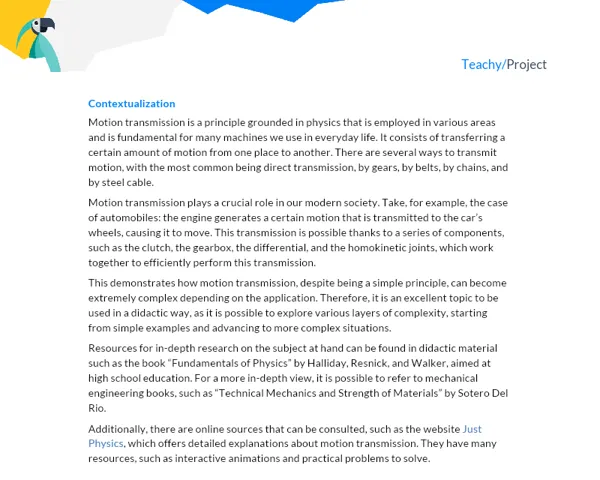Contextualization
Introduction
The simple pendulum is a fundamental concept in physics, depicting an idealized model of a pendulum. It consists of a point mass suspended by a light, inextensible, and frictionless string, oscillating in a simple harmonic motion. It is one of the oldest and most explored physical systems in the history of science, seen in the works of renowned scientists such as Galileo Galilei and Isaac Newton.
Studying the simple pendulum gives us insight into the basic principles of oscillatory motion. It provides a clear example of a system where there is conservation of energy - between the kinetic energy of the moving object and the potential energy it gains as it moves away from the rest position. Furthermore, the simple pendulum is a perfect example of a system that exhibits simple harmonic motion, a type of periodic motion that occurs when the acceleration of a particle with respect to time is proportional to its distance from a fixed point and is always directed towards that point.
Importance of the Simple Pendulum
The simple pendulum has considerable historical and practical importance. Historically, it was used in the precise determination of the value of acceleration due to gravity. Even today, it is used in a variety of devices, such as pendulum clocks and seismographs, to name a few. In fact, the fundamental principles of the pendulum are applied in various scientific and industrial contexts. For example, the concept of oscillation, demonstrated by the pendulum, is widely used in fields such as electrical and mechanical engineering, communications, etc.
The beauty of this topic lies in its simplicity and universal application. One can easily reproduce the motion of the pendulum and all related principles with some simple materials, making it an ideal science experiment for you, students. Studying the simple pendulum will develop your understanding of the physics and mathematics behind harmonic oscillation, as well as enhance your practical skills in conducting experiments.
Practical Activity
Activity Title: "Simple Harmonic Motion: Study and Simulation of a Simple Pendulum"
Project Objective
The objective of this project is to study the dynamics of the simple pendulum and conduct a practical experiment to observe simple harmonic motion. From this experiment, you will develop technical skills to calculate the oscillation period of the pendulum and the local acceleration due to gravity. Additionally, the project aims to enhance socio-emotional skills such as collaboration, time management, among others.
Detailed Project Description
Groups of 3-5 students will initially deepen their knowledge of the theory of the simple pendulum and then assemble their own pendulum using everyday materials, conducting data collection and analysis. The experiment involves measuring the time it takes for the pendulum to complete one full oscillation (period) as a function of the pendulum's length.
Required Materials
- Resistant string or twine (1m to 2m).
- Suspended mass (heavy and small object like a key or a metal clip).
- Ruler or tape measure.
- Support for hanging the pendulum (tree branch, beam, lamp stand, etc.).
- Stopwatch (can be on a smartphone).
- Calculator.
Detailed Step-by-Step
-
Assemble the simple pendulum by hanging the suspended mass on the string and fixing it to a support.
-
Adjust the length of the pendulum (distance from the support to the center of mass) to 1 meter.
-
Pull the pendulum to the side to an angle of about 20 degrees.
-
Release the pendulum and start timing the time it takes to complete 10 full oscillations. Repeat this procedure 3 times to ensure accuracy and take the average time.
-
Repeat steps 1-4 for different lengths of the pendulum (0.5m, 0.75m, 1.25m, 1.5m, etc). Don't forget to take 3 measurements for each length.
-
With the collected data, calculate the oscillation period for each length (average time of the 10 oscillations divided by 10).
-
Finally, plot a graph of the period squared (T^2) as a function of the pendulum length (L). Theoretically, they should have a linear relationship.
Project Deliverables
At the end of the project, each group must submit a detailed report containing:
-
Introduction: In this section, the simple pendulum should be contextualized, highlighting its relevance and real-world applications.
-
Development: Describe the theory of the simple pendulum and justify the experiment conducted. Explain the experiment procedure in detail, present the analysis and discussion of the collected results.
-
Conclusions: Highlight what was learned from the experiment, the challenges encountered, and how they were overcome. Report your conclusions about the simple pendulum based on practical experience.
-
Bibliography: Show the references used for the theory of the simple pendulum and for the experiment.
The reports should be digital and may contain images, graphs, and tables to enhance the presentation of results.


